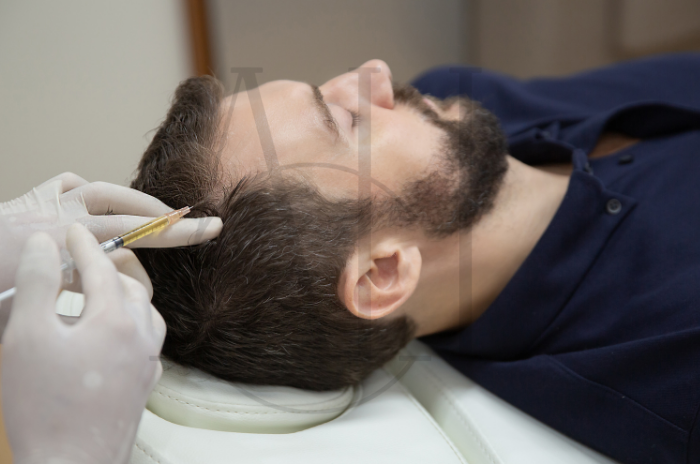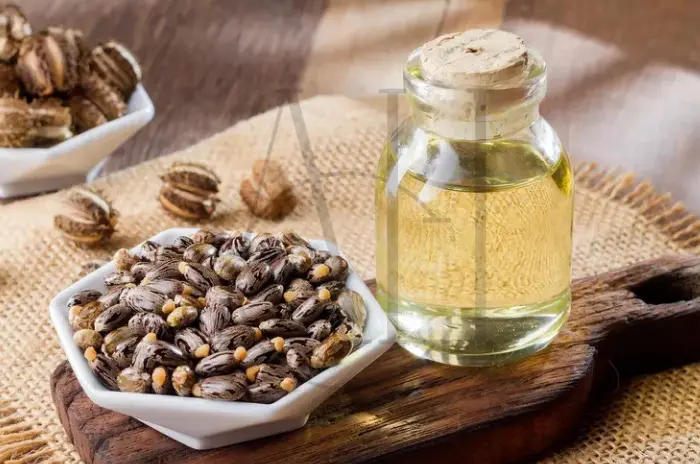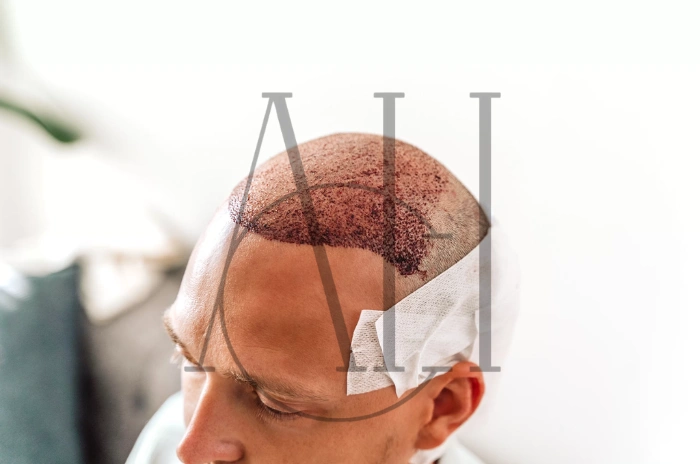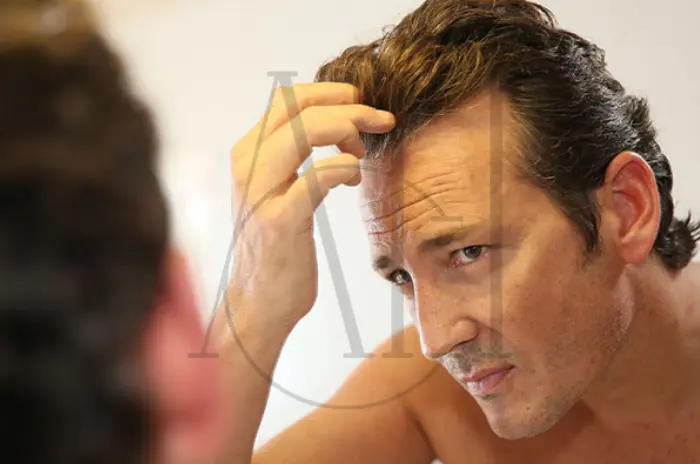Frizzy hair can be one of the most frustrating hair concerns, affecting people with all hair types from straight to coily—even those considering PRP Treatment for Hair Loss to improve overall hair health. Whether you wake up to an unruly mane on humid mornings or struggle with persistent frizz regardless of the weather, understanding the root causes and implementing effective management strategies can transform your hair care routine. This comprehensive guide will help you identify why your hair becomes frizzy and provide proven solutions to achieve smoother, more manageable locks.
Frizz occurs when the hair cuticle becomes raised, allowing moisture from the environment to enter the hair shaft and causing it to swell and become unruly. While some hair types are naturally more prone to frizz than others, external factors like humidity, heat damage, and improper care techniques can exacerbate the problem. The good news is that with the right knowledge and consistent care routine, even the most stubborn frizz can be tamed.
Table of Contents
ToggleWhat Causes Hair Frizz?
Understanding the underlying causes of frizz is the first step toward effective management. Hair frizz is fundamentally a structural issue that occurs when the hair’s outer layer, called the cuticle, becomes disrupted or damaged.
Humidity and Weather Conditions
Humidity is perhaps the most notorious culprit behind frizzy hair, and understanding this relationship is crucial for effective management. When the air contains high levels of moisture, your hair acts like a sponge, absorbing water from the environment.
How humidity affects different hair types:
- Damaged hair: Hair with compromised cuticles is most susceptible to humidity because the raised scales allow moisture to penetrate easily
- Naturally porous hair: Some hair types naturally have higher porosity, making them more vulnerable to environmental moisture
- Chemically treated hair: Hair that has been colored, permed, or chemically straightened often has damaged cuticles that can’t effectively block humidity
Weather-related frizz factors:
- High humidity levels (above 60%) can cause significant frizz in susceptible hair types
- Rain and moisture in the air create immediate frizz activation
- Seasonal changes affect hair differently, with summer humidity being particularly challenging
- Air conditioning and heating systems can also contribute to frizz by creating moisture imbalances
Scientific explanation: When humid air contacts hair, water molecules penetrate the hair shaft through damaged or naturally porous cuticles. This causes the hair to swell unevenly, creating the irregular texture we recognize as frizz.
Heat Styling and Chemical Damage
Excessive heat styling and chemical processing are leading causes of long-term frizz problems. These practices fundamentally alter the hair’s structure, making it more susceptible to environmental factors.
Heat damage mechanisms:
- High temperatures (above 350°F) can permanently damage the hair cuticle
- Repeated heat exposure causes protein denaturation within the hair shaft
- Hot tools remove moisture from hair, leaving it dry and prone to frizz
- Damaged cuticles can’t lay flat, creating an irregular surface that appears frizzy
Chemical processing effects:
- Hair coloring opens the cuticle to deposit or remove pigment
- Perming and relaxing treatments break and reform chemical bonds
- Bleaching is particularly damaging, often resulting in severe cuticle damage
- Over-processing can lead to irreversible structural damage
Common heat styling mistakes that increase frizz:
- Using tools at temperatures too high for your hair type
- Styling hair when it’s not completely dry
- Failing to use heat protectant products
- Using damaged or low-quality styling tools
- Applying heat to the same section of hair repeatedly
Lack of Moisture and Hydration
Dry hair is inherently more prone to frizz because it seeks moisture from any available source, including humidity in the air. This creates a cycle where dry hair becomes frizzy, and frizzy hair becomes drier.
Internal moisture factors:
- Natural oil production varies by individual and decreases with age
- Scalp health directly impacts hair moisture levels
- Hormonal changes can affect oil production and hair texture
- Nutritional deficiencies may impact hair’s ability to retain moisture
External moisture depletion:
- Over-washing strips natural oils from hair and scalp
- Harsh shampoo ingredients (sulfates) can be particularly drying
- Environmental factors like sun exposure and wind
- Indoor heating and air conditioning systems
Signs of moisture-deficient hair:
- Hair feels rough or straw-like to the touch
- Increased static electricity and flyaway strands
- Difficulty achieving smooth styles that last
- Hair appears dull and lacks natural shine
- Increased breakage and split ends
Hair Type and Texture Sensitivity
Different hair types have varying levels of natural frizz susceptibility based on their structural characteristics. Understanding your specific hair type helps predict frizz patterns and choose appropriate management strategies.
|
Hair Type |
Frizz Susceptibility |
Primary Causes |
Management Focus |
|
Type 1 (Straight) |
Low to Moderate |
Heat damage, over-washing |
Volume without weight |
|
Type 2 (Wavy) |
Moderate to High |
Humidity, improper styling |
Curl enhancement, moisture |
|
Type 3 (Curly) |
High |
Dryness, manipulation |
Intensive moisture, gentle handling |
|
Type 4 (Coily) |
Very High |
Natural structure, dryness |
Maximum moisture, protection |
Texture-related frizz factors:
- Fine hair: More susceptible to damage but easier to weigh down with heavy products
- Medium hair: Generally more resilient but can still experience significant frizz
- Coarse hair: Naturally more resistant to damage but requires intensive moisture
Genetic predisposition: Some individuals inherit hair that naturally produces less sebum or has irregular cuticle patterns, making them more prone to frizz regardless of care practices.
Ways to Tame and Get Rid of Frizzy Hair
Effective frizz management requires a multi-faceted approach that addresses both immediate styling needs and long-term hair health. These proven strategies can significantly reduce frizz when implemented consistently.
Good Haircut
The foundation of frizz-free hair often lies in having a well-executed haircut that works with your natural hair texture rather than against it. A skilled stylist who understands curly and frizzy hair can make an enormous difference in your daily styling routine.
Key elements of a frizz-friendly cut:
- Layer placement: Strategic layering can reduce bulk and weight that contributes to frizz
- Shape and structure: Cuts that complement your natural curl pattern reduce the need for excessive styling
- Damaged end removal: Regular trimming prevents split ends from traveling up the hair shaft
- Texture consideration: Different hair textures require different cutting techniques
Cutting techniques for frizz reduction:
- Dry cutting: Allows stylists to see exactly how your hair naturally falls and curls
- Point cutting: Creates softer edges that blend better and reduce harsh lines
- Slide cutting: Removes bulk while maintaining length and natural movement
- Razor cutting: Can add texture but should be used carefully on frizz-prone hair
Benefits of professional cuts for frizzy hair:
- Reduced styling time as hair falls more naturally into place
- Less need for heat styling and manipulation
- Improved product distribution and effectiveness
- Enhanced natural texture and curl pattern
- Better overall hair health and appearance
Turn Down the Temp
Reducing heat exposure is one of the most effective ways to prevent and reduce frizz. High temperatures damage the hair cuticle, leading to long-term frizz problems that become increasingly difficult to manage.
Optimal temperature guidelines:
|
Hair Type |
Maximum Temperature |
Recommended Range |
|
Fine/Damaged |
250°F |
200-250°F |
|
Medium/Normal |
300°F |
250-300°F |
|
Thick/Coarse |
350°F |
300-350°F |
|
Chemically Treated |
250°F |
180-250°F |
Heat reduction strategies:
- Use the lowest effective temperature for your hair type
- Invest in quality tools with accurate temperature controls
- Allow hair to air dry to 80% before heat styling
- Use heat protectant products without exception
- Limit heat styling to 2-3 times per week maximum
Alternative low-heat styling methods:
- Blow drying with cool shot settings
- Using heated rollers instead of curling irons
- Steam setting on flat irons for damaged hair
- Indirect heat methods like diffusing
Wash Wisely
Your washing routine significantly impacts frizz levels, and many people unknowingly contribute to their frizz problems through improper washing techniques and frequency.
Optimal washing frequency by hair type:
- Straight, fine hair: Every 1-2 days to prevent oil buildup
- Wavy hair: Every 2-3 days to maintain natural oils
- Curly hair: 1-2 times per week to preserve moisture
- Coily hair: Once per week or less to prevent dryness
Proper washing technique:
- Pre-rinse hair thoroughly with lukewarm water
- Apply shampoo primarily to the scalp, not the lengths
- Use gentle massage motions, avoid rough scrubbing
- Rinse completely to prevent product buildup
- Apply conditioner from mid-length to ends
- Use cool water for final rinse to seal cuticles
Product selection for frizz-prone hair:
- Choose sulfate-free shampoos that won’t strip natural oils
- Look for moisturizing and smoothing ingredients
- Avoid products with high alcohol content
- Consider co-washing (conditioner-only washing) for very dry hair
Mask the Frizz
Deep conditioning treatments and hair masks provide intensive moisture and repair that regular conditioners cannot achieve. These treatments should be a cornerstone of any anti-frizz routine.
Types of beneficial hair masks:
- Protein masks: Repair damaged hair structure and fill gaps in the cuticle
- Moisture masks: Provide deep hydration for dry, brittle hair
- Smoothing masks: Contain ingredients that temporarily smooth the cuticle
- Oil treatments: Penetrate the hair shaft to provide long-lasting moisture
Effective mask ingredients for frizz control:
- Keratin: Rebuilds hair structure and smooths cuticles
- Argan oil: Provides moisture without weighing hair down
- Shea butter: Offers intensive moisture for very dry hair
- Hyaluronic acid: Helps hair retain moisture from the environment
Application techniques for maximum benefit:
- Apply masks to damp, not soaking wet hair
- Use a wide-tooth comb to distribute evenly
- Cover with a shower cap to increase penetration
- Leave on for recommended time (usually 10-20 minutes)
- Rinse thoroughly with cool water
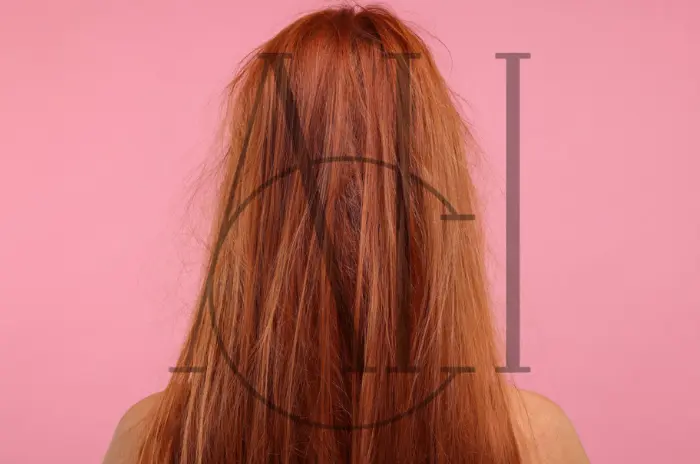
Frizzy Hair Heat Protectants
Heat protectants are non-negotiable for anyone using styling tools, but choosing the right formula for frizz-prone hair requires specific considerations.
Key ingredients in effective heat protectants:
- Silicones: Create a protective barrier against heat damage
- Proteins: Strengthen hair structure during heat exposure
- Moisturizing agents: Prevent dryness during styling
- Film-forming polymers: Provide additional protection and hold
Application best practices:
- Apply to damp hair before any heat styling
- Use enough product to coat all hair that will be exposed to heat
- Distribute evenly from mid-length to ends
- Allow product to dry slightly before applying heat
- Reapply if hair becomes damp during styling
Choosing the right heat protectant:
- Spray formulas: Best for fine to medium hair, easy application
- Cream formulas: Ideal for thick, coarse, or very damaged hair
- Oil-based: Good for very dry hair but may weigh down fine hair
- Leave-in conditioners with heat protection: Multi-purpose products for daily use
Blow Dry Strategically
Proper blow-drying technique can either dramatically reduce frizz or make it significantly worse. The key is using the right tools, products, and methods for your specific hair type.
Essential tools for frizz-free blow drying:
- Ionic blow dryer: Reduces static and drying time
- Diffuser attachment: Essential for curly and wavy hair
- Round brush: Natural bristles are gentler on the cuticle
- Heat protectant: Always apply before blow drying
Step-by-step frizz-minimizing technique:
- Start with hair that’s 70-80% air dried
- Apply heat protectant and anti-frizz products
- Use medium heat and high airflow settings
- Direct airflow down the hair shaft, not against it
- Keep the dryer moving to prevent overheating any section
- Finish with a cool shot to seal the cuticle
Specific techniques for different hair types:
- Straight hair: Use a paddle brush and focus on smoothing
- Wavy hair: Scrunch with a diffuser or air dry partially first
- Curly hair: Always use a diffuser with low heat and speed
- Coily hair: Consider air drying as primary method, use diffuser minimally
Don’t Brush Your Hair Too Often
Over-brushing is a common cause of frizz, particularly for those with naturally textured hair. Understanding when and how to brush can significantly impact frizz levels.
When brushing causes frizz:
- Brushing dry curly or wavy hair disrupts curl patterns
- Aggressive brushing damages the cuticle
- Using the wrong type of brush for your hair texture
- Brushing too frequently stimulates excess oil production
Proper brushing guidelines:
- Straight hair: Can be brushed daily with natural bristle brushes
- Wavy hair: Brush only when wet with wide-tooth comb
- Curly hair: Never brush when dry, detangle only when wet with conditioner
- Coily hair: Use fingers or wide-tooth comb only, minimal manipulation
Alternative detangling methods:
- Finger combing for gentle separation
- Wide-tooth combs for wet hair detangling
- Denman brushes for curl definition
- Wet brush types designed for gentle detangling
Avoid Cotton Fabric
The type of fabric your hair comes into contact with, particularly during sleep, can significantly impact frizz levels. Cotton’s rough texture can create friction that leads to frizz and breakage.
Why cotton causes frizz:
- Rough texture creates friction against hair cuticles
- Absorbs moisture from hair, leading to dryness
- Can snag and pull on hair during movement
- Creates static electricity in dry environments
Better fabric alternatives:
- Silk pillowcases: Smoothest surface, reduces friction significantly
- Satin pillowcases: More affordable than silk, still effective
- Bamboo fabric: Naturally smooth and moisture-wicking
- Microfiber: Very smooth surface, good for budget-conscious options
Additional protection methods:
- Silk or satin hair wraps and bonnets
- Loose braids or protective styles for sleeping
- Hair scarves for travel or exercise
- Avoiding cotton towels for hair drying
Best Anti-Frizz Styling Techniques
Mastering specific styling techniques can dramatically improve your ability to manage frizz on a daily basis. These professional methods can be adapted for home use with practice and the right tools.
Air-Drying vs. Diffusing
The choice between air-drying and diffusing depends on your hair type, available time, and desired results. Both methods can be effective for reducing frizz when done correctly.
Air-drying benefits:
- Zero heat damage
- Allows natural curl pattern to form
- Minimal manipulation reduces frizz
- Cost-effective and simple
- Best for fine or easily damaged hair
Proper air-drying technique:
- Gently squeeze excess water with microfiber towel
- Apply leave-in products to very damp hair
- Scrunch hair gently to encourage curl formation
- Avoid touching hair while it dries
- Use clips to lift sections for better airflow
Diffusing advantages:
- Faster drying time
- Enhanced volume and curl definition
- Reduces shrinkage in curly hair
- Better control over final result
- Suitable for thick, dense hair
Effective diffusing method:
- Attach diffuser to blow dryer
- Use low heat and low speed settings
- Cup sections of hair in the diffuser bowl
- Lift diffuser toward scalp and hold for 10-20 seconds
- Move to next section without disturbing dried areas
- Finish with cool air to set the style
|
Method |
Best For |
Time Required |
Frizz Risk |
|
Air-drying |
Fine, damaged, loose waves |
2-4 hours |
Low |
|
Diffusing |
Thick, curly, time-pressed |
30-60 minutes |
Medium |
|
Combination |
Most hair types |
1-2 hours |
Low |
Using Leave-In Conditioners and Serums
Leave-in treatments provide ongoing frizz protection and moisture throughout the day. Choosing the right formulation and application method is crucial for success.
Types of leave-in treatments:
- Lightweight sprays: Best for fine to medium hair
- Creamy leave-ins: Ideal for thick, coarse, or very dry hair
- Oil-based serums: Provide shine and moisture for all hair types
- Protein leave-ins: Good for damaged or chemically treated hair
Key ingredients to look for:
- Humectants: Glycerin, honey, aloe vera (draw moisture from air)
- Emollients: Natural oils, butters (provide slip and moisture)
- Proteins: Silk, keratin, wheat protein (strengthen hair structure)
- Silicones: Dimethicone, cyclomethicone (provide heat protection and shine)
Application techniques for maximum effectiveness:
- Apply to damp hair for better distribution
- Start with small amounts and add more if needed
- Focus on mid-lengths and ends, avoid roots
- Use prayer hands method for even distribution
- Scrunch gently to encourage natural texture
How to Apply Hair Oil Without Greasiness
Hair oils can be incredibly effective for frizz control, but improper application often results in greasy, weighed-down hair. Learning the right technique makes all the difference.
Best oils for frizz control:
- Argan oil: Lightweight, absorbs quickly, good for all hair types
- Jojoba oil: Closely mimics natural sebum, non-greasy
- Sweet almond oil: Moisturizing without heaviness
- Grapeseed oil: Very light, good for fine hair
- Coconut oil: Heavy but very effective for coarse, thick hair
Proper oil application method:
- Start with 1-2 drops for shoulder-length hair
- Warm oil between palms before application
- Apply to damp hair, not dry or soaking wet
- Focus on ends and work upward, avoiding roots
- Use pressing motions rather than rubbing
- Style as usual after application
Common oil application mistakes:
- Using too much product at once
- Applying to dry hair where it can’t penetrate well
- Concentrating oil at the roots instead of ends
- Using heavy oils on fine hair types
- Not warming oil before application
Avoiding Brushing When Dry
For textured hair types, dry brushing is one of the fastest ways to create frizz and disrupt natural curl patterns. Understanding when and how to handle your hair is crucial.
Why dry brushing causes frizz:
- Separates natural curl clumps
- Damages the cuticle through friction
- Creates static electricity
- Disrupts the hair’s natural fall and movement
Better alternatives to dry brushing:
- Finger combing: Gently separate sections with fingers
- Wet detangling: Only detangle with conditioner in hair
- Wide-tooth combs: Use only on damp hair with product
- Denman brushes: For curl definition on wet hair only
When detangling is necessary:
- Always do it on wet hair with conditioner
- Start from ends and work toward roots
- Use gentle, patient motions
- Take breaks if hair is severely tangled
- Consider protective styles to minimize daily manipulation
Use a Sulfate-Free Shampoo and Conditioner
Sulfates are harsh cleansing agents that strip natural oils and can exacerbate frizz, particularly in textured or chemically treated hair. Making the switch to sulfate-free products is often transformative for frizz-prone hair.
Why sulfates worsen frizz:
- Strip natural protective oils from hair and scalp
- Can cause cuticle damage over time
- Lead to dryness that makes hair seek moisture from humidity
- May cause irritation that affects scalp health
Benefits of sulfate-free formulations:
- Gentler cleansing that preserves natural oils
- Less likely to cause dryness and subsequent frizz
- Better for color-treated and chemically processed hair
- Often contain moisturizing ingredients
- Suitable for daily use if needed
Transitioning to sulfate-free products:
- Expect an adjustment period of 2-4 weeks
- Hair may initially feel different or heavier
- Use a clarifying treatment once per month
- Be patient as hair adjusts to gentler cleansing
- Consider co-washing between regular shampooing
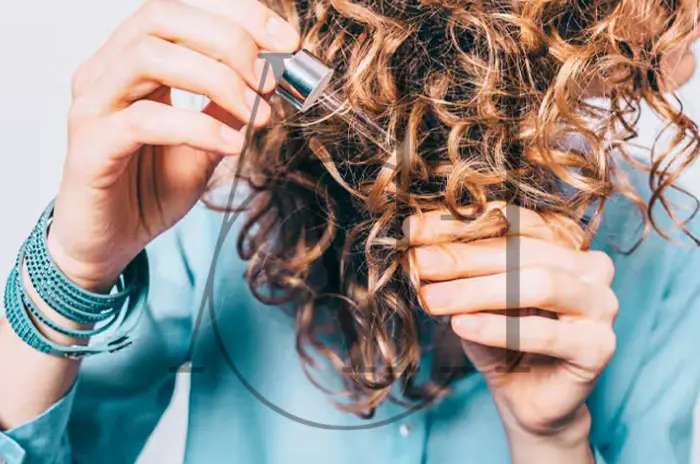
Natural Remedies for Frizzy Hair
Natural treatments can be highly effective for frizz management and often provide additional benefits like moisture, shine, and scalp health. These remedies are particularly useful for those seeking chemical-free solutions.
Coconut Oil and Honey Masks
The combination of coconut oil and honey creates a powerful treatment that addresses multiple frizz-causing factors simultaneously. This natural remedy provides deep moisture, antimicrobial benefits, and temporary smoothing effects.
Benefits of coconut oil for frizz:
- Penetrates hair shaft due to small molecular structure
- Provides lasting moisture and protection
- Contains lauric acid which strengthens hair
- Natural heat protectant properties
- Antimicrobial properties support scalp health
Honey’s contribution to frizz control:
- Natural humectant that draws moisture from the environment
- Contains enzymes that promote scalp health
- Smooths hair cuticles for temporary frizz reduction
- Adds natural shine and softness
- Helps other ingredients penetrate more effectively
DIY Coconut Oil and Honey Mask Recipe:
- 2 tablespoons virgin coconut oil (melted)
- 1 tablespoon raw honey
- 1 teaspoon olive oil (optional for extra moisture)
- Mix ingredients until well combined
- Apply to damp hair from mid-length to ends
- Cover with shower cap and leave for 30-60 minutes
- Rinse thoroughly and shampoo gently
- Use weekly for best results
Application tips for maximum effectiveness:
- Warm coconut oil slightly for easier application
- Focus on the most frizz-prone areas
- Avoid applying to roots unless scalp is very dry
- Use a wide-tooth comb to distribute evenly
- Be patient with rinsing as oil can be stubborn to remove
Aloe Vera Gel for Moisture Retention
Aloe vera gel is an excellent natural frizz fighter that provides moisture, smoothing properties, and lightweight hold without the heaviness of many commercial products.
How aloe vera combats frizz:
- Forms a light film that smooths cuticles
- Provides moisture without greasiness
- Contains amino acids that strengthen hair
- Natural pH balancing properties
- Lightweight texture won’t weigh hair down
Choosing and using aloe vera:
- Use pure aloe vera gel without additives
- Fresh aloe from the plant is most effective
- Apply to damp hair for better distribution
- Can be mixed with other natural ingredients
- Suitable for daily use on most hair types
Aloe vera application methods:
- Pure gel application: Apply directly to damp hair, focusing on frizz-prone areas
- Aloe vera spray: Mix with water in spray bottle for daily refreshing
- Combined treatments: Mix with oils or other natural ingredients
- Styling aid: Use as a natural gel for curl definition
Benefits beyond frizz control:
- Soothes irritated or inflamed scalp
- Adds natural shine without build-up
- Provides heat protection for light styling
- Helps maintain curl definition
- Suitable for sensitive scalps
Apple Cider Vinegar Rinses
Apple cider vinegar (ACV) rinses are a time-tested natural remedy for frizz that works by balancing hair pH and smoothing the cuticle layer.
Science behind ACV for frizz control:
- Acidic pH (4.5-5.5) closes and smooths cuticles
- Removes product buildup that can cause frizz
- Balances scalp pH for optimal hair health
- Natural antimicrobial properties
- Clarifies without harsh chemicals
Proper ACV rinse preparation:
- Mix 1-2 tablespoons ACV with 1 cup cool water
- Use raw, unfiltered ACV with “mother” for best results
- Add a few drops of essential oil to improve scent
- Prepare fresh mixture for each use
- Store in refrigerator if making larger batches
Application technique:
- Shampoo hair as usual
- Pour ACV mixture slowly over hair and scalp
- Massage gently for 1-2 minutes
- Rinse thoroughly with cool water
- Follow with conditioner if needed
- Use once per week or as needed
Precautions and considerations:
- Always dilute ACV before use
- Avoid contact with eyes
- Start with weaker concentration and increase gradually
- May lighten color-treated hair over time
- Discontinue if scalp irritation occurs
Long-Term Frizz Management
Sustainable frizz control requires a long-term approach that addresses underlying causes and maintains hair health over time. These strategies provide lasting results rather than temporary fixes.
Regular Trims to Avoid Split Ends
Consistent trimming is one of the most important long-term strategies for frizz control. Split ends and damage travel up the hair shaft, creating more frizz and requiring more drastic measures over time.
Why regular trims reduce frizz:
- Remove damaged ends that contribute to frizz
- Prevent split ends from traveling up the hair shaft
- Maintain healthy hair structure
- Improve overall hair appearance and manageability
- Reduce the need for excessive styling and manipulation
Optimal trimming schedule:
- Healthy hair: Every 8-12 weeks
- Damaged or chemically treated hair: Every 6-8 weeks
- Very damaged hair: Every 4-6 weeks until health improves
- Fine hair: More frequent trims to maintain shape
- Thick, coarse hair: Can go longer between trims
What to expect from regular trims:
- Gradual improvement in hair texture and manageability
- Reduced styling time as hair becomes healthier
- Less need for heavy products and treatments
- Better curl definition and overall appearance
- Improved hair growth appearance as damage is removed
Communicating with your stylist:
- Explain your frizz concerns and goals
- Ask for minimal length removal if growing hair out
- Request specific cutting techniques for your hair type
- Discuss at-home care recommendations
- Schedule regular appointments to maintain progress
Consider Keratin or Smoothing Treatments
Professional smoothing treatments can provide significant frizz reduction for several months, making them valuable tools for those with persistent frizz problems.
Types of professional smoothing treatments:
|
Treatment Type |
Duration |
Frizz Reduction |
Maintenance |
|
Brazilian Blowout |
3-4 months |
60-80% |
Sulfate-free products |
|
Keratin Treatment |
3-5 months |
70-90% |
No washing 72 hours |
|
Japanese Straightening |
6-8 months |
90-95% |
Root touch-ups needed |
|
Express Treatments |
4-6 weeks |
40-60% |
Minimal restrictions |
Benefits of professional treatments:
- Significant reduction in daily styling time
- Long-lasting frizz control
- Improved hair manageability
- Protection from humidity
- Can make hair appear healthier and shinier
Considerations before treatment:
- Cost can be significant ($150-$500+)
- Temporary lifestyle restrictions (no washing, clips, ponytails)
- May not be suitable for very damaged hair
- Requires maintenance and proper aftercare
- Results vary based on hair type and condition
Aftercare for smoothing treatments:
- Use only sulfate-free shampoos and conditioners
- Avoid excessive heat styling
- Sleep on silk or satin pillowcases
- Use deep conditioning treatments regularly
- Schedule touch-ups as recommended
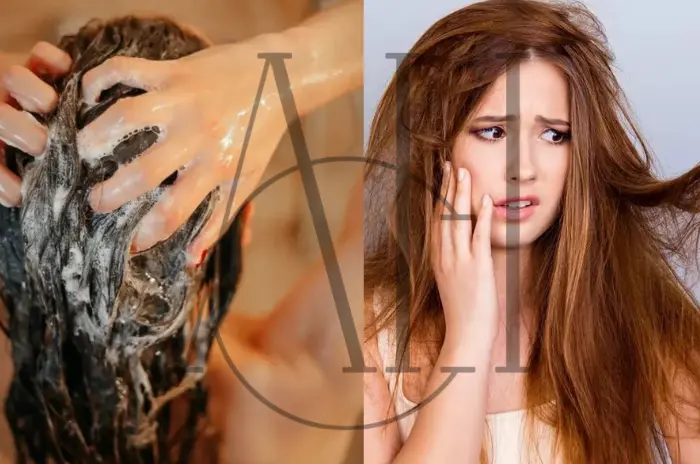
Monitor Your Diet and Hydration
Internal health significantly impacts hair health and frizz levels. Proper nutrition and hydration support strong, healthy hair that’s naturally more resistant to frizz.
Nutrients essential for healthy hair:
- Protein: Building blocks for hair structure (eggs, fish, legumes)
- Iron: Supports healthy hair growth (leafy greens, red meat)
- Omega-3 fatty acids: Provide moisture and shine (salmon, walnuts)
- Biotin: Supports hair strength (avocados, sweet potatoes)
- Vitamin E: Protects against environmental damage (nuts, seeds)
Hydration’s impact on hair health:
- Adequate water intake supports scalp health
- Proper hydration helps maintain hair elasticity
- Dehydration can lead to dry, brittle hair
- Aim for 8-10 glasses of water daily
- Consider humid environment effects on hydration needs
Lifestyle factors affecting hair health:
- Stress management: Chronic stress can worsen hair problems
- Sleep quality: Poor sleep affects overall hair health
- Exercise: Improves circulation to scalp
- Smoking cessation: Smoking reduces circulation and damages hair
- Moderate alcohol consumption: Excessive drinking can lead to nutritional deficiencies
Signs that diet may be affecting hair:
- Sudden increase in hair loss or breakage
- Changes in hair texture or growth rate
- Increased dryness or oiliness
- Poor response to usual hair care products
- Slow healing of scalp issues
Do’s and Don’ts for Frizz-Free Hair
Following specific guidelines can dramatically improve your frizz management success. These evidence-based recommendations help you avoid common mistakes while maximizing the effectiveness of your efforts.
Do Hydrate Regularly
Consistent moisture is the foundation of frizz control. Hair that’s properly hydrated is less likely to seek moisture from humid environments, reducing frizz formation.
Daily hydration strategies:
- Apply leave-in conditioner to damp hair every morning
- Use a water spray bottle to refresh curls throughout the day
- Sleep with a humidifier in dry climates or during winter
- Apply light oils to ends daily if hair is very dry
- Use moisture-rich styling products consistently
Weekly intensive hydration:
- Deep conditioning treatments with moisture-rich masks
- Oil treatments using penetrating oils like coconut or argan
- Steam treatments to help products penetrate more deeply
- Protein-moisture balance treatments for damaged hair
- Professional hydrating treatments when needed
Signs your hair needs more hydration:
- Increased static electricity and flyaways
- Hair feels rough or straw-like
- Styles don’t hold as long as usual
- Increased breakage and split ends
- Curls lose definition quickly
Don’t Use Harsh Alcohol-Based Products
Alcohol-based products can severely dry out hair, making it more prone to frizz. Learning to identify and avoid these ingredients is crucial for long-term frizz management.
Types of alcohols to avoid:
- Isopropyl alcohol: Very drying, found in some styling products
- Ethanol/Ethyl alcohol: Can be drying in high concentrations
- Denatured alcohol: Modified alcohol that’s particularly harsh
- SD Alcohol: Specially denatured alcohol used in cosmetics
Better alternatives to look for:
- Fatty alcohols: Cetyl alcohol, stearyl alcohol (actually moisturizing)
- Alcohol-free formulations: Specifically labeled as such
- Natural styling aids: Aloe vera, flax seed gel, honey-based products
- Oil-based products: Natural oils and butter-based stylers
Reading product labels effectively:
- Alcohols are typically listed in first 5-7 ingredients if present in significant amounts
- Look for “alcohol-free” claims on packaging
- Research unfamiliar ingredient names before purchasing
- Choose products specifically designed for dry or frizz-prone hair
- Consider natural and organic product lines
Do Embrace Air-Drying When Possible
Air-drying is the gentlest drying method and often produces the best results for frizz-prone hair when done correctly.
Benefits of air-drying:
- Zero heat damage to hair cuticles
- Allows natural curl pattern to form
- Reduces manipulation and friction
- Cost-effective and environmentally friendly
- Often produces longer-lasting styles
Optimizing air-drying results:
- Start with proper product application on very damp hair
- Use microfiber towels or cotton t-shirts for initial water removal
- Scrunch hair gently to encourage natural texture
- Avoid touching or manipulating hair while drying
- Use clips to lift sections for better airflow and volume
When air-drying may not be ideal:
- Very thick, dense hair that takes hours to dry
- Time constraints requiring faster styling
- Cold climates where wet hair is uncomfortable
- Hair that dries unevenly or with poor curl formation
- Professional or formal styling requirements
Tips for Styling Frizzy Hair
Successful frizzy hair styling requires specific techniques and approaches that work with your hair’s natural tendencies rather than against them.
Start in the Shower
Your frizz-fighting routine should begin in the shower with proper cleansing and conditioning techniques that set the foundation for smooth, manageable hair.
Shower routine for frizz control:
- Pre-rinse thoroughly: Remove surface dirt and styling products
- Gentle shampooing: Focus on scalp, let suds cleanse lengths naturally
- Thorough rinsing: Ensure no shampoo residue remains
- Generous conditioning: Apply from mid-length to ends
- Detangle carefully: Use wide-tooth comb with conditioner in hair
- Cool final rinse: Seal cuticles with cooler water temperature
In-shower detangling technique:
- Always detangle with conditioner in hair
- Start from ends and work upward in small sections
- Use fingers first, then wide-tooth comb if needed
- Be patient and gentle to avoid breakage
- Consider using a detangling spray for stubborn knots
Product application in shower:
- Apply conditioner generously to very wet hair
- Use praying hands method for even distribution
- Leave conditioner on for 3-5 minutes for better penetration
- Rinse most but not all conditioner for extra slip
- Apply leave-in products immediately after shower
Find the Right Products
Product selection is crucial for frizz management, and finding the right combination often requires experimentation and understanding of your specific hair needs.
Essential product categories:
- Gentle cleanser: Sulfate-free shampoo or co-wash
- Rich conditioner: Moisturizing formula for regular use
- Leave-in treatment: Daily moisture and protection
- Styling product: Cream, gel, or mousse for hold and definition
- Deep treatment: Weekly intensive moisture or protein
Key ingredients for frizz-prone hair:
- Moisturizing: Shea butter, glycerin, hyaluronic acid
- Smoothing: Silicones, natural oils, plant butters
- Strengthening: Proteins, amino acids, peptides
- Protecting: UV filters, antioxidants, heat protectants
Product selection guidelines:
|
Hair Type |
Texture |
Recommended Products |
|
Fine, frizzy |
Lightweight |
Mousse, light leave-in, volumizing products |
|
Medium, frizzy |
Moderate weight |
Creams, gels, balanced moisture-protein |
|
Thick, frizzy |
Rich formulas |
Heavy creams, butters, intensive treatments |
Embrace Your Natural Hair
Working with your hair’s natural texture rather than fighting it often produces the best results and requires less time and effort.
Benefits of embracing natural texture:
- Reduced styling time and effort
- Less heat and chemical damage
- Lower maintenance requirements
- Often healthier-looking results
- More sustainable long-term approach
Learning your hair’s natural patterns:
- Observe hair when air-dried without products
- Note where different textures occur on your head
- Identify your hair’s natural part and growth patterns
- Understand how your hair responds to different techniques
- Document what works best through photos and notes
Working with natural texture:
- Choose cuts that complement your natural growth patterns
- Use styling techniques that enhance rather than fight natural movement
- Select products that support your hair’s natural tendencies
- Develop realistic expectations based on your hair’s capabilities
- Focus on health and manageability over perfection
Transitioning to natural texture:
- Gradually reduce heat styling and harsh treatments
- Experiment with new techniques and products
- Be patient during the adjustment period
- Consider working with an intermediary organization that specializes in natural hair care
- Document your journey to track progress and successful techniques
FAQ :
What are the primary reasons hair becomes frizzy?
Hair becomes frizzy primarily due to raised cuticles that allow moisture to enter the hair shaft. Main causes include humidity, heat damage, chemical processing, lack of moisture, and natural hair structure.
How does humidity contribute to hair frizz?
Humidity causes frizz when water molecules from the air penetrate damaged or porous hair cuticles, causing the hair shaft to swell unevenly and create an irregular, frizzy texture.
What hair care practices can help reduce frizz in the shower and after?
Use sulfate-free shampoos, condition generously, detangle only when wet with conditioner, rinse with cool water, and apply leave-in products to damp hair immediately after showering.
Are there specific styling techniques to tame frizzy hair?
Yes, effective techniques include air-drying or diffusing on low heat, using leave-in conditioners, applying oils correctly, avoiding dry brushing, and using the prayer hands method for product application.
What natural remedies can be effective for frizzy hair
Coconut oil and honey masks provide deep moisture, aloe vera gel offers lightweight smoothing, and apple cider vinegar rinses help balance pH and smooth cuticles.
What kind of products should I look for to manage frizzy hair?
Look for sulfate-free shampoos, moisturizing conditioners, leave-in treatments with smoothing ingredients, and styling products with natural oils, silicones, or plant-based smoothing agents.
Should I use heat styling tools if I have frizzy hair?
Use heat tools sparingly and always with heat protectant. Keep temperatures below 300°F for most hair types, and consider air-drying or diffusing as gentler alternatives.
What long-term strategies can help keep frizz under control?
Regular trims to remove damage, professional smoothing treatments when appropriate, maintaining proper nutrition and hydration, and developing a consistent routine with suitable products.

